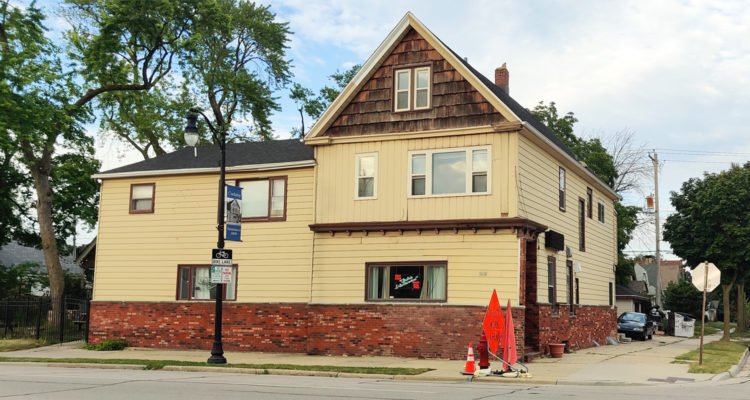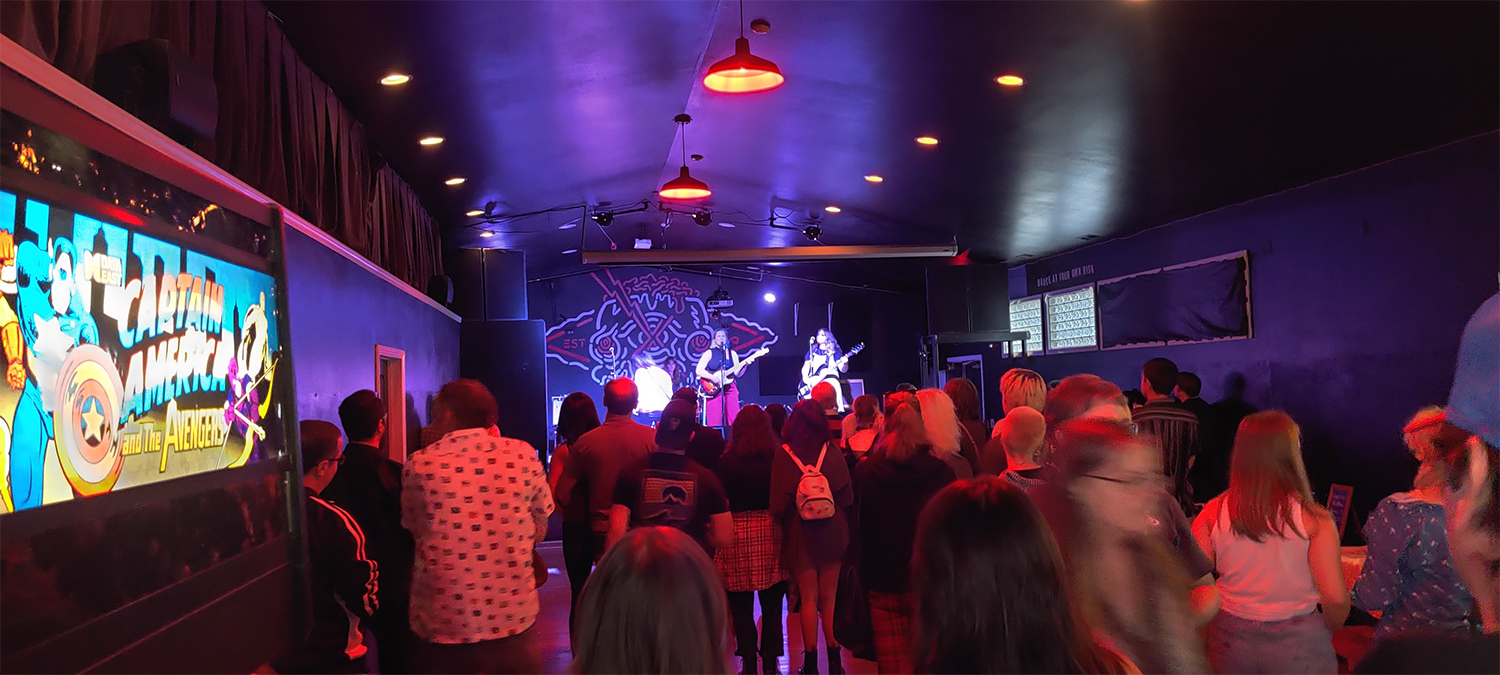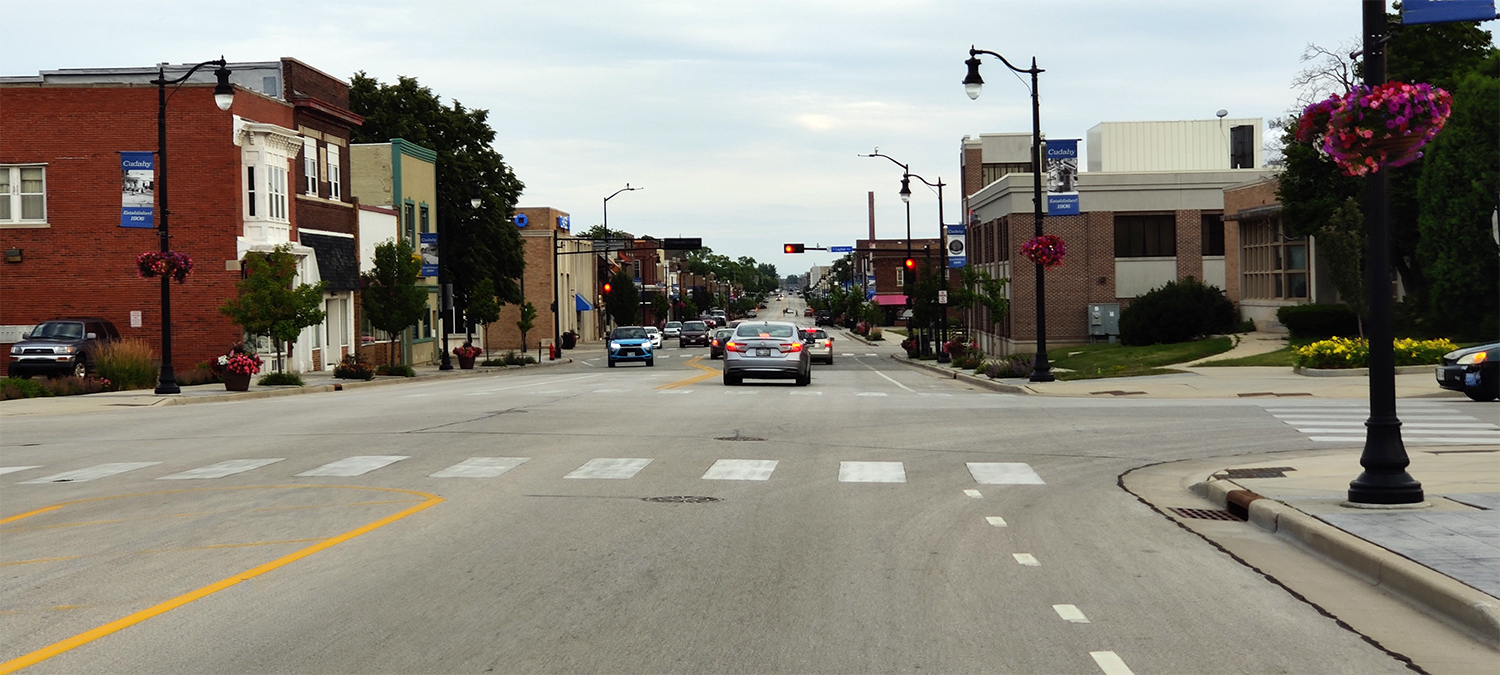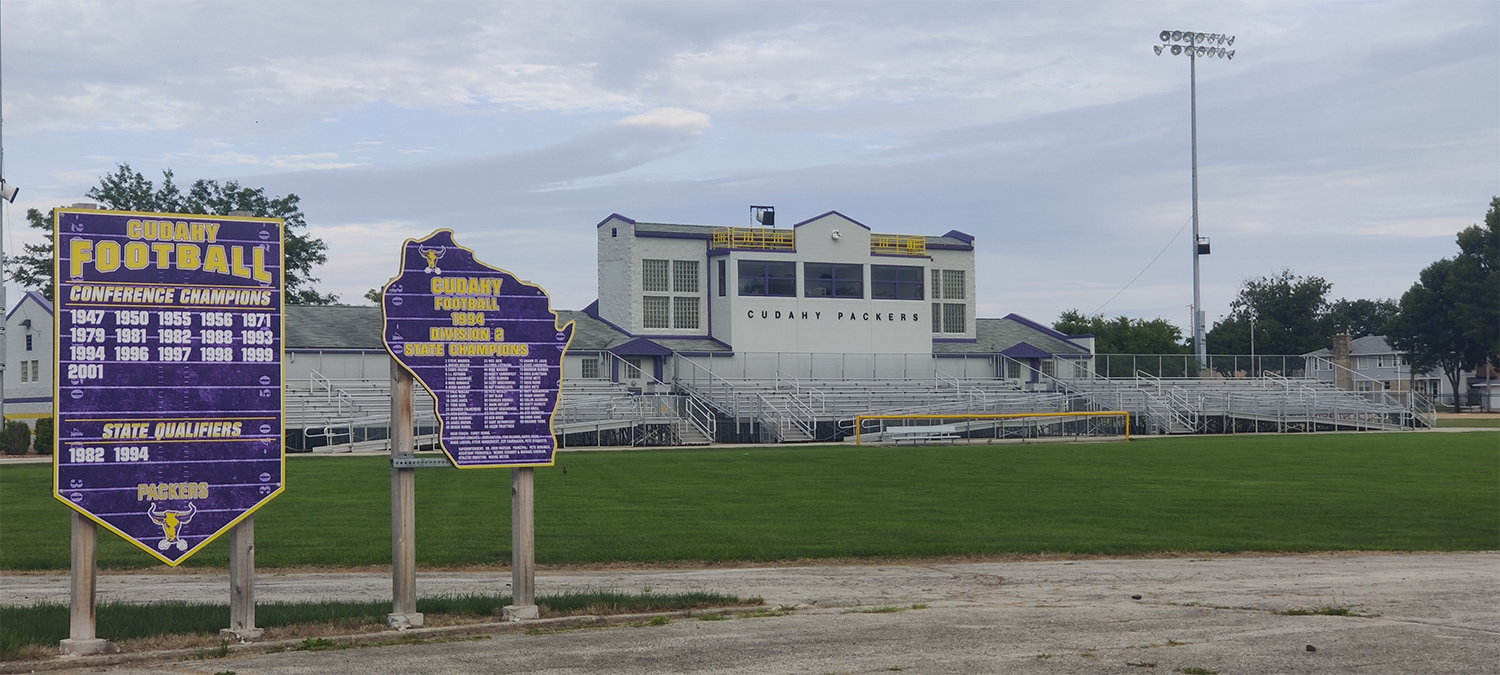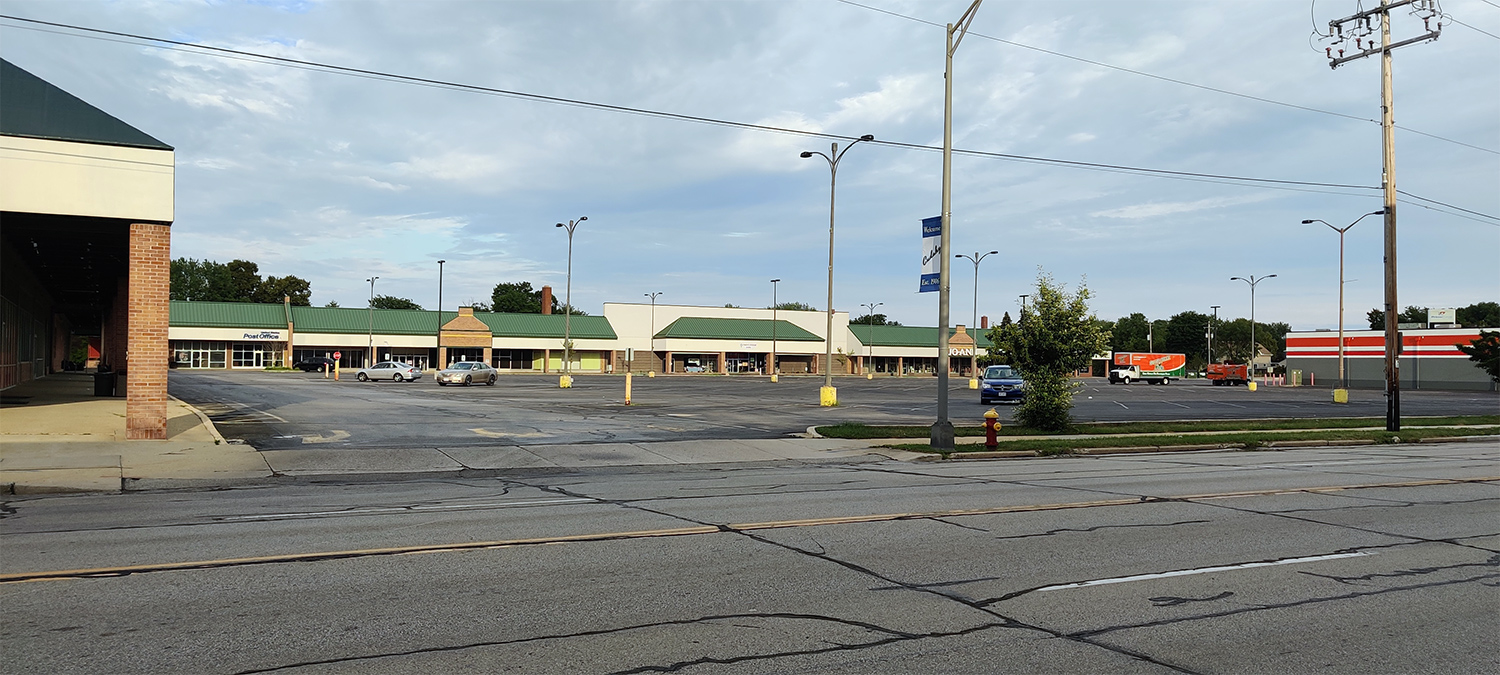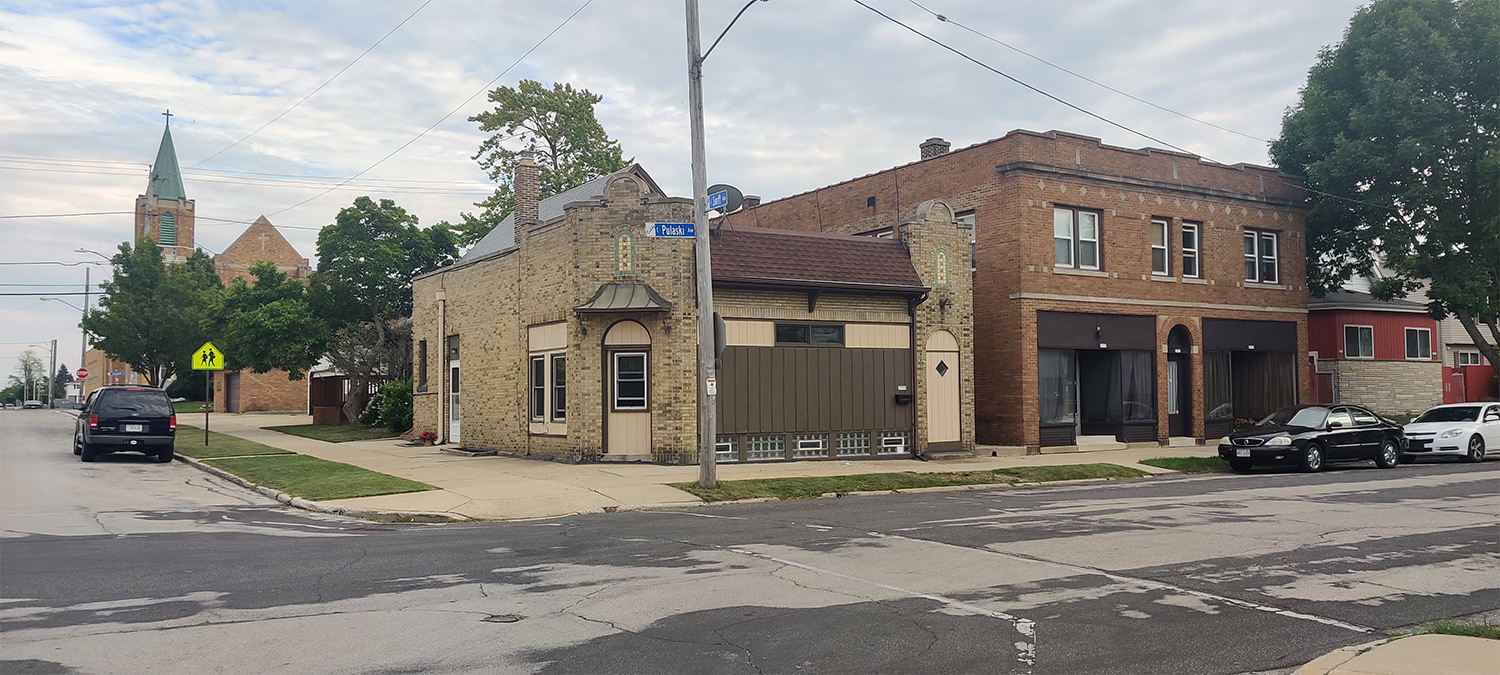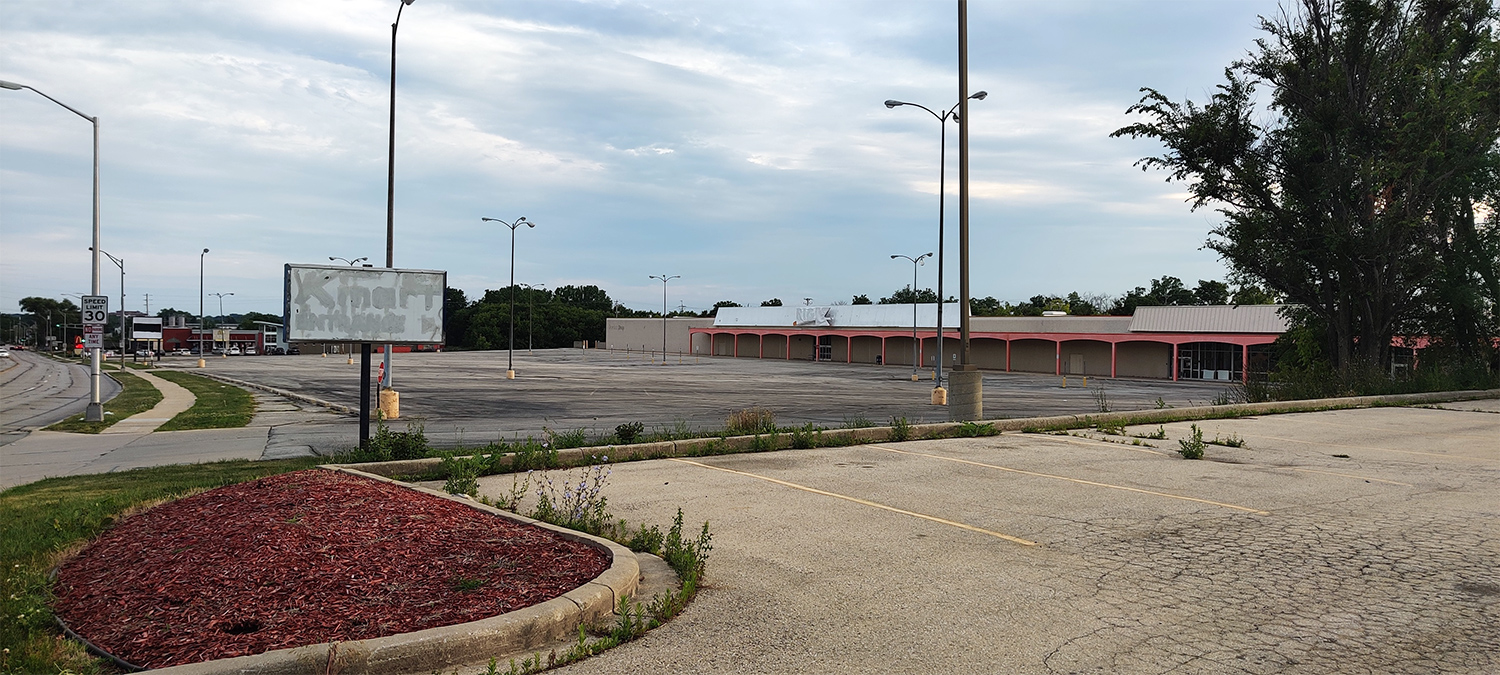After the longest year of our collective lives, 2020 finally feels like it’s almost over…seven months after it officially ended. Masks are no longer required, shots are going into arms, and things are looking up! And seven months in, my own personal indicator of “normal life” has finally occurred: On Friday, July 7, 2021, I went to my first concert in 16 months.
The global pandemic isn’t yet over. But my personal pandemic is, and it ended in Cudahy.
Local band Negative/Positive was the first band I had the opportunity to see since the pandemic cancelled every concert since March (make that two Marches ago). The concert was great; if this young band is representative of the up-and-coming Milwaukee music scene, it’s in very good hands. Negative/Positive is comfortable in both pensive reflection and Riot Grrrl mode, and the age of the members belie the group’s experience and talent while explaining their energy; the guitarist spent more time jumping off of the stage than on it. Go see them this summer if you get the chance.
But equally important in making the concert great was simply that it was happening at all. For the first time in a long time, I was in a crowd without feeling cornered, or in danger, or alone. Live music was back in our lives again, and, if only for a moment, the pandemic felt like distant history.
Not only were we all hearing the same songs, we were apparently having the same thoughts. I overheard several sentiments from my fellow concertgoers that fell along similar lines as my own:
“So, when was your last show?”
“This feels weird.”
“Has it really been more than a year?”
“Should we really be doing this?”
I felt seen.
This is very personal to me, as the availability and the range of concert venues is one of the reasons I moved to Milwaukee in the first place. It’s one of the main reasons I wanted to stay after graduating college. One of the biggest holes caused by the pandemic was, to me, the loss of live music. Some experiences are portable. Restaurants figured out takeaway counters. Retailers shipped things in boxes directly to porches. But it is truly impossible to recreate that feeling of sharing a collective experience through music. There’s no curbside pickup for concerts.
These were the places most in trouble. These were the businesses I was most worried would not come back.
Apparently, someone at The New York Times also had the same fear, because deep in the depths of the pandemic winter this past February, the editors reached out to readers to ask if they had any local small businesses that a.) opened their doors less than a year before the pandemic, b.) were hampered by shutdowns, and c.) still became integral to their community within that short window.
While I was asked to participate in a follow-up interview with the Times, my piece was ultimately not chosen for publication. But the experience made me reflect on those small businesses that I was thinking of spotlighting. It turns out there was a large number of these places: The coffee shop that, when faced with increasing raw material costs, found a solution by casting pennies into its floor. The restaurant that made me think I could possibly, maybe, actually go vegan. There was the salon with wonderfully gaudy window displays. There was the art studio that rescued a distressed storefront and turned the appearance of a whole block around.
But eventually I selected one I wanted to submit a 200-word summary about: X-Ray Arcade. In its short pre-pandemic existence, X-Ray had introduced me to more new bands than any Pandora or Spotify algorithm could have. Its commitment to the DIY punk aesthetic is sincere, and its dedication to inclusion feels almost subversive in today’s climate. And it was the nexus around which my visits to the above places revolved.
You see, they are all within walking distance to The X. They are all located in Cudahy.
These relative newcomers have also joined longer-tenured businesses such as my favorite bike shop (South Shore Cyclery), two of my favorite taco joints (Lala’s Place and Mexic 103), and of course, as previously covered by others here, plenty of anachronistic stores and best-in-class lakefront parks.
Cudahy, to my surprise, is the closest example of a 15-Minute City the south shore has.
Since I moved to Milwaukee, haven’t I been told that Cudahy is, has ever only been, and will only ever be a blue-collar town, unable or unwilling to support any business that isn’t a bar? Hasn’t it always been used as regional shorthand for “unsophisticated”? Are people only moving to Cudahy because they can’t afford Bay View? Is it really losing businesses left and right, unable to support even a Gatorade dispensary? Does it really always smell like bacon?
A colleague of mine once summarized all of the various Cudahy slings and arrows: “Cudahy is the most Wisconsin place in Wisconsin.” He was originally commenting on the city’s reputation as a blue-collar third-shift tavern town (which is especially harsh since Milwaukee isn’t exactly known for being a posh teetotalling city itself), but while it was meant to be disparaging, I also saw within it high praise.
True, Cudahy is proud of its blue-collar heritage, but isn’t Wisconsin considered largely a blue-collar state? For one, it continues the grand Wisconsin tradition of naming 19th century company towns after its local “titans of industry.” (See also: Kohler, Schofield, Kronenwetter, Steven’s Point, etc.) Also true, Cudahy has a lot of taverns (and is one of the last places in the area to sport a $2 shot/beer/cigarette special), but it’s nowhere near those powerhouses in the Fox Cities. Politically, unlike the other bubbly suburbs, Cudahy is split in much the same way as the state is as a whole (which is to say: nearly 50/50). Still, in keeping with the Midwest attitude, neighbors who display opposing Back The Blue and BLM signs will still shovel each other’s sidewalks when it snows.
The brandy-soaked cherry on top is that the local high school football team is the Packers. THE PACKERS! You can’t get more Wisconsin than that.
Certainly, Cudahy has its problems. There are parts of the city that look like they’re failing. Along the city’s main drag, there are acres of parking space nearly empty at all hours of the day. For fun, I looked up Cudahy’s zoning code for these blighted areas (yes, I look up zoning codes for fun, I’m a huge dork), and found that the city is doing its damndest to keep these areas that way.
Once upon a time, 60 or so years ago, suburban communities would try to attract national retail chains by one-upping each other on offering amenities, a sort of interurban “keeping up with the Greenfields.” The overwhelming favorite was the “parking minimum”: an exercise in who could mandate the most asphalt, assurance that no one would be turned away for lack of parking. Over the years, all of those companies have since been bought out, downsized, or simply failed (one building in town housed both a K-Mart and a Sears; ouch, can’t catch a break). The zoning restrictions, however, live on.
By living in this bygone era, by maintaining these byzantine laws, by eschewing its own walkability and ready access to transit, Cudahy has succeeded in paving over nearly half of the available commercial space in the city. At less than five square miles, it’s one of the smallest cities in Milwaukee County. One failed strip mall would make the city look undesirable. Cudahy has three, which makes the southern half of Packard Avenue look positively post-apocalyptic.
But Cudahy also has so much potential. The polar opposite of the “dark store” is a hyper-local example of vernacular architecture, one that I think we should call the “Yoosta.” As in: “that place yoosta be a bar.”
Scattered throughout town are buildings that were at one point in their histories, unmistakably, drinking establishments. But today they are houses, duplexes, contractor’s offices, etc. The sheer number of Yoostas gives credence to Cudahy’s past reputation as a hard-drinking town (it truly was that old Wisconsin cliché of “a bar on every corner”), but it’s also definitive of Cudahy’s best trait: finding the potential in what others might discard. Without letting them sit fallow, and without the financing a traditional developer might have, these small-scale (and, yes, largely blue-collar) do-it-yourselfers poured sweat equity into the existing structures instead of razing them to the ground to start over. Like the Polish Flats of Milwaukee’s south side, they were a low-cost way for locals to develop their own properties instead of selling to outside investors. They might not be flashy, some of them might not even be up to code, but they are distinctive. They maintained the dense urban fabric without disruption. Most importantly, they allowed for the community to reinvest in itself.
Most of Cudahy’s new businesses are housed in Yoostas. The X-Ray Arcade used to be a dance hall. Charleston Café used to be a brothel (ask about the building’s history, it’s fascinating). And while the city currently makes it impossible to emulate these small-scale successes south of Grange, these zoning laws can, and should, be reconsidered.
If South Packard was all you saw of the town, you’d be forgiven to think that Cudahy is shrinking, unable to support any business, what with its empty lots and vacant malls. But, for its size, Cudahy is actually one of the most densely populated communities in the state, currently sitting at seventh densest. When not taking its many parks and industrial zones into account, it’s even higher. One census district boasts a density of 15,000 people per square mile, on par with the most popular areas in Bay View.
Well, perhaps “boast” is the wrong word. Also in keeping with Wisconsin tradition, dense walkable communities not named “Shorewood” or “Wauwatosa” tend to be valuated lower, and are less attractive to outside investment than more car-oriented areas. (This map identifies Milwaukee as one of a small handful of metros in the country where walkable neighborhoods are on average valued 13.5% lower per square foot than their sprawl-loving counterparts, flying in the face of current national trends).
But Wisconsin’s aversion to pedestrian-oriented, densely populated, high-amenity communities shows signs of abating. There’s a reason why Bay View, Shorewood, and Wauwatosa are among the fastest-growing markets in the area: walkability is finally not a sin. Proximity to parks, and the lake, is a major advantage. Transit connectivity to downtown is key. There are also reasons why people are getting priced out of those neighborhoods: they are few and far between. These types of places have been zoned out of existence. No one is building them anymore.
Fortunately, Cudahy is offering all these things at a fraction of the cost, and brave entrepreneurs are taking notice and taking a chance. It is these attributes that have silently attracted some of the most creative, inventive, passionate small businesses in the metro area. Notably, many of these new businesses are minority owned, making the city an unlikely (only due to its reputation) representative of inclusivity and diversity.
The future of the city is not in following the path that the other suburbs have taken. It’s too small, too densely populated, too close to other (larger) suburbs, too far from the highway to attract any more big box chains. No Ikea is coming to “save” Cudahy. Its salvation will come from the examples set by X-Ray Arcade, by Charleston Café, by Twisted Plants. The city needs to do everything in its power to become a small-business incubator while redeveloping Packard with more, smaller units that are attractive to first-time entrepreneurs. They need to embrace the Yoosta mindset by empowering citizens to create something they can be proud of.
Isn’t the city’s motto, after all, “Generations of Pride”?
If it wasn’t for The X, I may not have gotten the chance to appreciate these places, to see the potential in this oft-maligned hamlet. The X had merely set out to create an all-ages venue (with the most eclectic concert list possible), providing a safe space for anyone and everyone to share their musical tastes. What it ended up doing was reintroduce me to an entire city by embodying the best of the city’s traits: inclusive, tenacious, a little quirky, and above all…DIY AF.
Say what you will about Cudahy (I have found that no one who lives there cares if they are considered trendy or not), but it has all it needs to be Milwaukee’s next best ‘burb. It just might not realize it yet. Density is no longer a sin in the same way that crowds are no longer a crime. Own it, encourage it, cultivate it.
In any case, my personal pandemic is over. And I have a small business in Cudahy to thank for that.
Exclusive articles, podcasts, and more. Support Milwaukee Record on Patreon.
RELATED ARTICLES
• Coffee in Cudahy: The Charleston Cafe is now open on Layton Avenue
• Twisted Plants is now serving vegan delights out of a permanent location in Cudahy
• Comparing Cudahy, Wisconsin and Cudahy, California
• X-Ray Arcade will bring gaming, all-ages events to Cudahy starting February 9
• Burned-out neon letters in the Cudahy Arby’s sign, ranked
• Exploring a different side of Cudahy: Sheridan Park
• The 9 inexplicable Gatorade displays at Cudahy’s Pick ‘n Save, ranked

